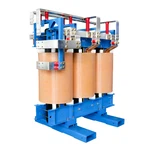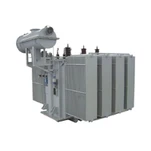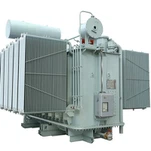The main protection and backup protection of transformers are critical measures to ensure their safe operation. They differ in function, operating range, and configuration. Below is a detailed explanation of the two types of protection:
1. Main Protection
Definition
Main protection is the primary protection device for a transformer. It is designed to quickly clear faults inside the transformer and its connected systems, minimizing fault impact and damage.
Features
Speed: Main protection responds quickly, clearing faults in a short time.
Selectivity: It acts only on the faulty component, avoiding unnecessary outages.
Sensitivity: It is highly sensitive to internal transformer faults.
Common Types of Main Protection
Differential Protection
Protection Range: Transformer windings and their connections.
Principle: Compares the current on both sides of the transformer. During normal operation, the difference is near zero; during faults, the difference increases, triggering the protection.
Features: Highly sensitive to internal faults like phase-to-phase short circuits, turn-to-turn faults, and winding failures.
Gas (Buchholz) Protection
Protection Range: Faults inside the transformer tank, such as minor discharges, local overheating, or oil decomposition.
Principle: Detects gas accumulation (light gas) or abnormal oil flow velocity (heavy gas).
Features: Especially effective for detecting internal faults like turn-to-turn short circuits or insulation breakdowns.
Overcurrent Protection (Supplementary)
Used to quickly clear internal winding or nearby short circuit faults.
2. Backup Protection
Definition
Backup protection serves as an auxiliary protection in case the main protection fails or as additional protection for areas not covered by the main protection.
Features
Broader Coverage: It can act on areas outside the range of main protection.
Delayed Operation: Typically operates with a delay to avoid conflict with the main protection.
Coordinated Action: Works in coordination with protections of adjacent equipment to ensure overall grid safety.
Common Types of Backup Protection
Combined Voltage and Overcurrent Protection
Protection Range: Transformer body and nearby line faults.
Principle: Activates when the current exceeds a set value and the voltage drops below a certain threshold.
Features: Suitable for handling high-impedance grounding faults or distant short circuits.
Overload Protection
Protection Range: Prevents long-term overloading of the transformer.
Principle: Activates after the load current exceeds a set value for a specific duration.
Features: Operates with a long delay to avoid false trips.
Distance Protection
Protection Range: Transformer and line junctions.
Principle: Measures the reactance between the fault point and the protection device to determine fault distance.
Features: Suitable for long-distance transmission systems.
Zero-Sequence Current Protection
Protection Range: Ground faults.
Principle: Detects whether the zero-sequence current exceeds a set value, indicating a ground fault.
Features: Highly sensitive to ground short circuits.
3. Differences Between Main Protection and Backup Protection
| Aspect | Main Protection | Backup Protection |
|---|---|---|
| Operating Range | Transformer body and directly connected areas | Covers areas outside the main protection range |
| Response Speed | Fast operation | Delayed operation |
| Function | Clears faults directly | Supplements main protection and guards against failures |
| Coordination | Operates independently | Coordinates with main and adjacent protections |
| Typical Protection | Differential protection, gas protection | Overcurrent, combined voltage-overcurrent protection |
4. Key Considerations
Reasonable Configuration
The configuration of main and backup protections should be based on equipment importance, operating voltage level, and wiring method.
Protection Coordination
Main protection should act quickly to clear faults, while backup protection ensures effective action in case of main protection failure, avoiding overlapping protection zones that could cause malfunctions.
Regular Maintenance
Periodically test the sensitivity and reliability of protection devices to ensure normal operation.
Main and backup protections complement each other, jointly ensuring the safe operation of the transformer.











